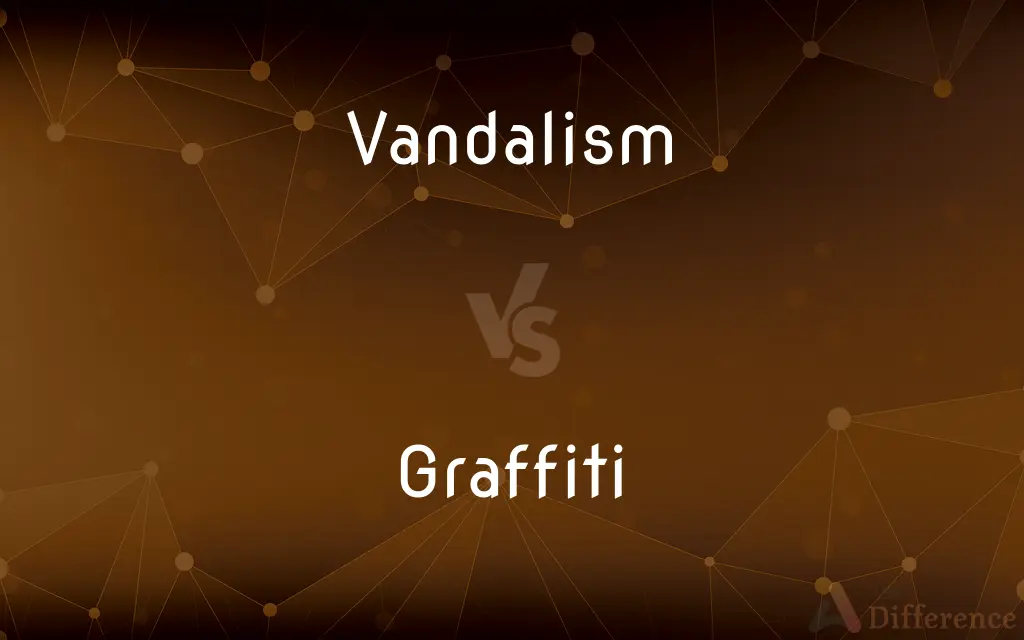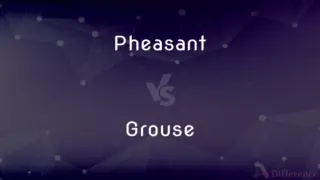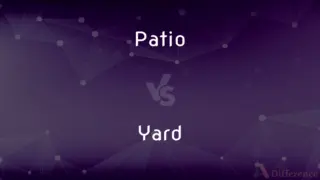Vandalism vs. Graffiti — What's the Difference?
By Tayyaba Rehman — Updated on October 11, 2023
"Vandalism" is the deliberate defacement or destruction of property, while "Graffiti" refers to drawings or writings on a wall or surface, often in public view.

Difference Between Vandalism and Graffiti
Table of Contents
ADVERTISEMENT
Key Differences
"Vandalism" pertains to acts that intentionally damage, deface, or destroy another person's or public property. It is characterized by the deliberate intent to cause harm without the consent of the property owner. "Graffiti", on the other hand, is a specific form of visual expression, usually consisting of drawings, writings, or symbols painted or inscribed on walls or other surfaces, predominantly in public places.
While "Vandalism" covers a broad range of malicious actions towards properties (like breaking windows, damaging cars, or destroying public facilities), "Graffiti" is narrowly defined by the application of paint or other markings. Notably, not all Graffiti is deemed Vandalism; some might be legally sanctioned murals or public art pieces.
Another dimension to consider is the motivation behind each action. "Vandalism" is generally driven by destructive intent, but "Graffiti" can be driven by various motivations, from personal expression, protest, to mere mischief. Some view Graffiti as a valid form of artistic expression, while others see it as a form of Vandalism when executed without permission.
In summary, while "Vandalism" is an umbrella term for various malicious acts towards property, "Graffiti" is a specific art form or marking on surfaces. Context and intent play a pivotal role in determining if a particular instance of Graffiti is also Vandalism.
Comparison Chart
Part of Speech
Noun
Noun
ADVERTISEMENT
Definition
Deliberate damage to property.
Drawings/writings on a wall/surface.
Intent
Often malicious.
Can be artistic or expressive, sometimes malicious.
Legal stance
Typically illegal, being property damage.
Can be either illegal (if unsanctioned) or legal (murals).
Example
Smashing a window.
Spray-painting a mural on a designated public wall.
Compare with Definitions
Vandalism
Deliberate destruction of or damage to property.
The broken windows are a result of Vandalism.
Graffiti
Unauthorized inscriptions or drawings.
The new Graffiti on the store's wall was reported to the police.
Vandalism
Intentional harm or spoilage.
Vandalism to public sculptures is a growing concern.
Graffiti
A form of visual communication in public spaces.
Some cities have districts known for their Graffiti art.
Vandalism
Mischievous or malicious destruction.
Local teens were arrested for Vandalism at the park.
Graffiti
Drawings or inscriptions made on a wall or surface.
The alley was full of colorful Graffiti.
Vandalism
Malicious or ignorant defacement.
The historic monument suffered Vandalism last night.
Graffiti
Scribbled, scratched, or sprayed markings.
The underpass features Graffiti from local artists.
Vandalism
Wilful or ignorant destruction for no obvious gain.
The school experienced Vandalism over the summer break.
Graffiti
Artistic or scribbled writings in public places.
The subway station has been covered in Graffiti.
Vandalism
Vandalism is the action involving deliberate destruction of or damage to public or private property. The term includes property damage, such as graffiti and defacement directed towards any property without permission of the owner.
Graffiti
Graffiti (both singular and plural; the singular graffito is rarely used except in archeology) is writing or drawings made on a wall or other surface, usually without permission and within public view. Graffiti ranges from simple written words to elaborate wall paintings, and has existed since ancient times, with examples dating back to ancient Egypt, ancient Greece, and the Roman Empire.Graffiti is a controversial subject.
Vandalism
Action involving deliberate destruction of or damage to public or private property
An act of mindless vandalism
Surveillance of the building would reduce vandalism and theft
Graffiti
Writing or drawings scribbled, scratched, or sprayed illicitly on a wall or other surface in a public place
The station was covered in graffiti
Vandalism
Willful or malicious damage or destruction of the property of another.
Graffiti
Write or draw graffiti on (something)
The graffitied walls
Vandalism
Willful damage to or destruction of any property, such as graffiti or defacement.
As we turned down the street I was appalled by the vandalism: spray paint and smashed windows that were everywhere.
Graffiti
Drawings or inscriptions made on a wall or other surface, usually without permission and so as to be seen by the public.
Vandalism
The spirit or conduct of the Vandals; ferocious cruelty; hostility to the arts and literature, or willful destruction or defacement of any object of beauty or value.
Graffiti
Drawings or words drawn on a surface in a public place, usually made without authorization.
The underpass is a popular place for graffiti artists.
The city council spends thousands of pounds removing graffiti from public buildings.
Vandalism
Willful wanton and malicious destruction of the property of others
Graffiti
Informal inscriptions, figure drawings, etc., as opposed to official inscriptions.
Graffiti
(transitive) To mark a surface with such images.
Graffiti
Inscriptions, figure drawings, etc., found on the walls of ancient sepulchers or ruins, as in the Catacombs, or at Pompeii.
Graffiti
Any writings or drawings on a surface in a public place, placed there without authorization of the owner of the object on which it is written. Such graffiti are usually unwelcome, and are considered as form of vandalism.
Graffiti
A rude decoration inscribed on rocks or walls
Common Curiosities
What encompasses Vandalism?
Vandalism involves deliberate damage or defacement of property without permission.
How do municipalities usually treat Graffiti?
Many treat unsanctioned Graffiti as Vandalism, but some cities have designated areas for Graffiti as public art.
Can Graffiti be a form of protest?
Yes, some Graffiti can convey political or social messages, acting as a form of protest or commentary.
What drives people to commit Vandalism?
Reasons vary, from boredom, rebellion, anger, to the thrill of destruction.
Are there laws against Vandalism?
Yes, most places have laws prohibiting Vandalism, with penalties varying based on the extent of the damage.
Are there Graffiti tours in some cities?
Yes, some cities offer tours showcasing iconic Graffiti and street art.
How do property owners typically react to Vandalism?
Many see it as a violation and may install security measures or report it to authorities.
Can Vandalism be artistic?
While Vandalism focuses on damage, some might perceive certain acts, like unsanctioned Graffiti, as having artistic value.
Are there famous Graffiti artists?
Absolutely, artists like Banksy have gained international acclaim for their Graffiti.
Is all Graffiti considered Vandalism?
No, while some Graffiti is unsanctioned and may be considered Vandalism, others, like sanctioned murals, are legal forms of art.
Is Vandalism a modern problem?
Vandalism has historical precedents, but modern forms may manifest differently due to societal changes.
Can Vandalism have political motivations?
Yes, acts of Vandalism can be politically driven, especially during protests or civil unrest.
Can Graffiti increase the value of a property?
If the Graffiti is a recognized piece of art, it can potentially increase interest or value.
Why might someone choose Graffiti as a medium?
Reasons can include personal expression, desire for public visibility, or making a societal statement.
Share Your Discovery

Previous Comparison
Pheasant vs. Grouse
Next Comparison
Patio vs. YardAuthor Spotlight
Written by
Tayyaba RehmanTayyaba Rehman is a distinguished writer, currently serving as a primary contributor to askdifference.com. As a researcher in semantics and etymology, Tayyaba's passion for the complexity of languages and their distinctions has found a perfect home on the platform. Tayyaba delves into the intricacies of language, distinguishing between commonly confused words and phrases, thereby providing clarity for readers worldwide.














































